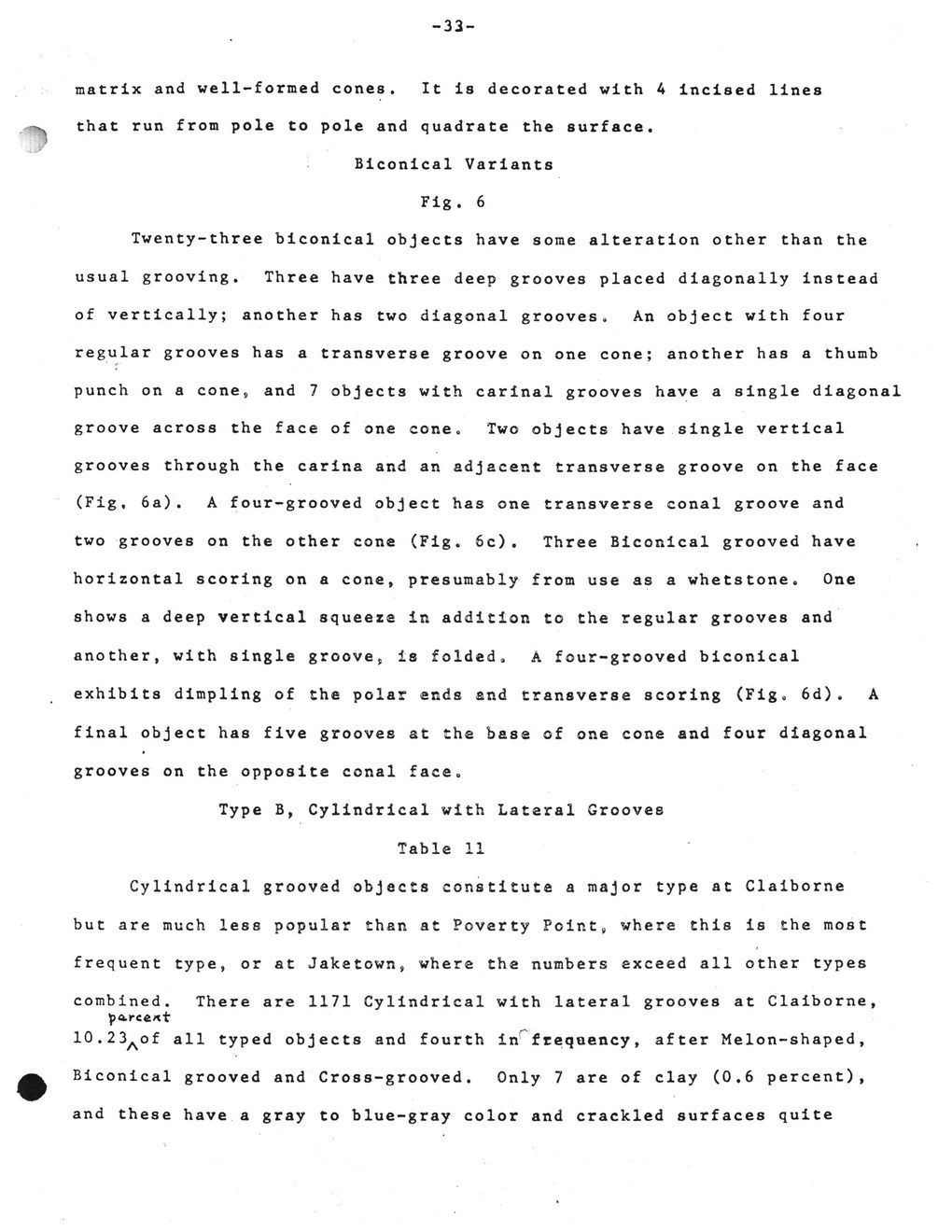This text was obtained via automated optical character recognition.
It has not been edited and may therefore contain several errors.
matrix and well-formed cones. It is decorated with 4 incised lines that run from pole to pole and quadrate the surface. Biconical Variants Fig. 6 Twenty-three biconical objects have some alteration other than the usual grooving. Three have three deep grooves placed diagonally instead of vertically; another has two diagonal grooves. An object with four regular grooves has a transverse groove on one cone; another has a thumb punch on a cone, and 7 objects with carinal grooves have a single diagonal groove across the face of one cone. Two objects have single vertical grooves through the carina and an adjacent transverse groove on the face (Fig, 6a). A four-grooved object has one transverse conal groove and two grooves on the other cone (Fig. 6c). Three Biconical grooved have horizontal scoring on a cone, presumably from use as a whetstone. One shows a deep vertical squeeze in addition to the regular grooves and another, with single groove, is folded. A four-grooved biconical exhibits dimpling of the polar ends and transverse scoring (Fig. 6d) . A final object has five grooves at the base of one cone and four diagonal grooves on the opposite conal face. Type B, Cylindrical with Lateral Grooves Table 11 Cylindrical grooved objects constitute a major type at Claiborne but are much less popular than at Poverty Point, where this is the most frequent type, or at Jaketown, where the numbers exceed all other types combined. There are 1171 Cylindrical with lateral grooves at Claiborne, }>arce*t 10.23Aof all typed objects and fourth in frequency, after Melon-shaped, Biconical grooved and Cross-grooved. Only 7 are of clay (0.6 percent), and these have a gray to blue-gray color and crackled surfaces quite

Walden 043